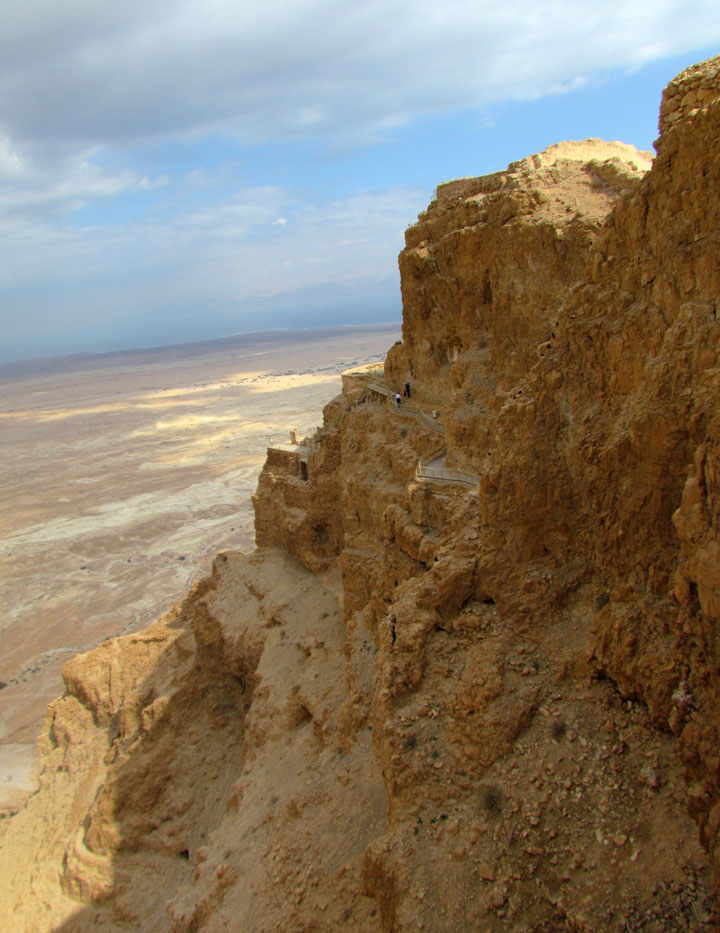

Herod’s Palace
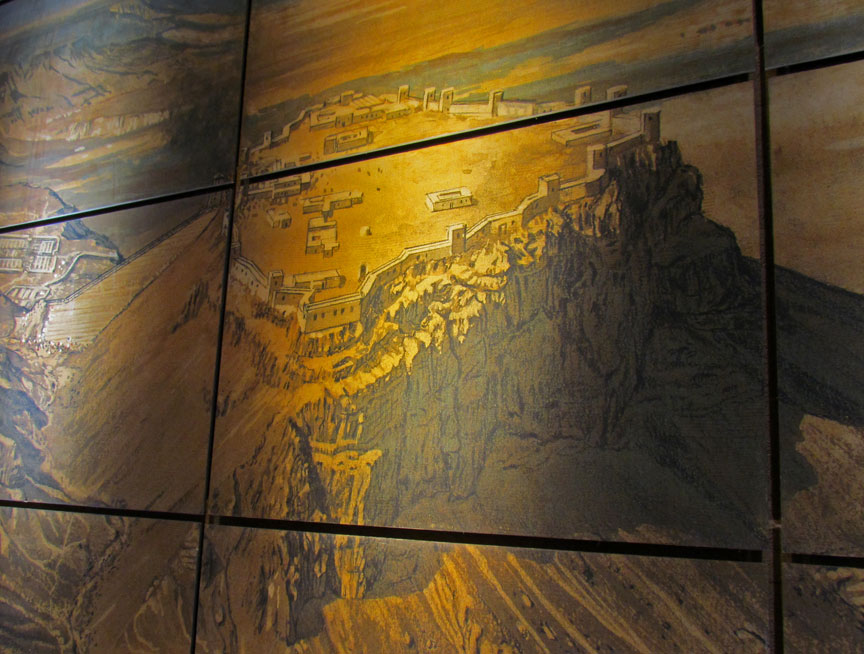
diagram of Masada
Herod the Great is renowned as the builder of Masada. The plateau’s natural defensive attributes –vertical cliffs some 400 meters above the Dead Sea – were not enough for the builder-king, and he fortified a 400 x 600-meter plateau further, with a casemate wall and towers.
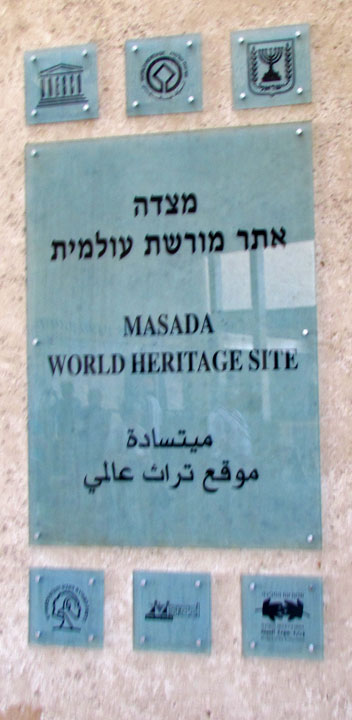
World Heritage Site
But he also saw to the site’s creature comforts, building large and small palaces, a bathhouse, storerooms for food and drink and many other amenities.

The Northern Palace is Masada’s most impressive structure, constructed against
the northern cliff-face as if hanging over the abyss. It is built on three rock
terraces, each containing grand rooms and supported by gigantic retaining walls
to expand their size. The four bedrooms on the top level had a semicircular
balcony that revealed magnificent views of the surroundings, especially En Gedi
to the north and the Dead Sea and the Mountains of Moab to the east. A staircase
led to the middle level – a large, round hall surrounded by a colonnade that
extended almost to the cliff-edge. On the lowest terrace was another large,
colonnaded hall adorned with spectacular wall paintings, and a private bathhouse
for the palace's residents. Herod also built a large bathhouse atop the plateau
for the other inhabitants of Masada.


Commandant's Headquarters
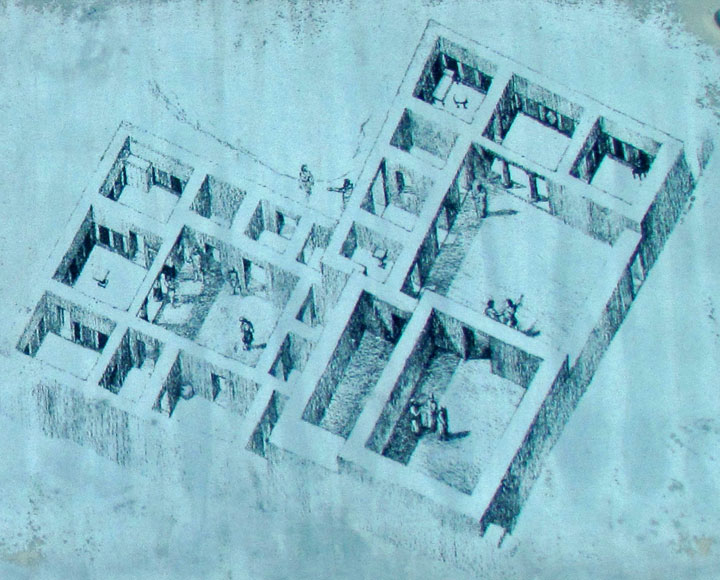
On the top of the mountain Herod built 29 storerooms, each one 27 meters long.
Excavations there turned up hundreds of clay pots that could hold huge amounts
of food.
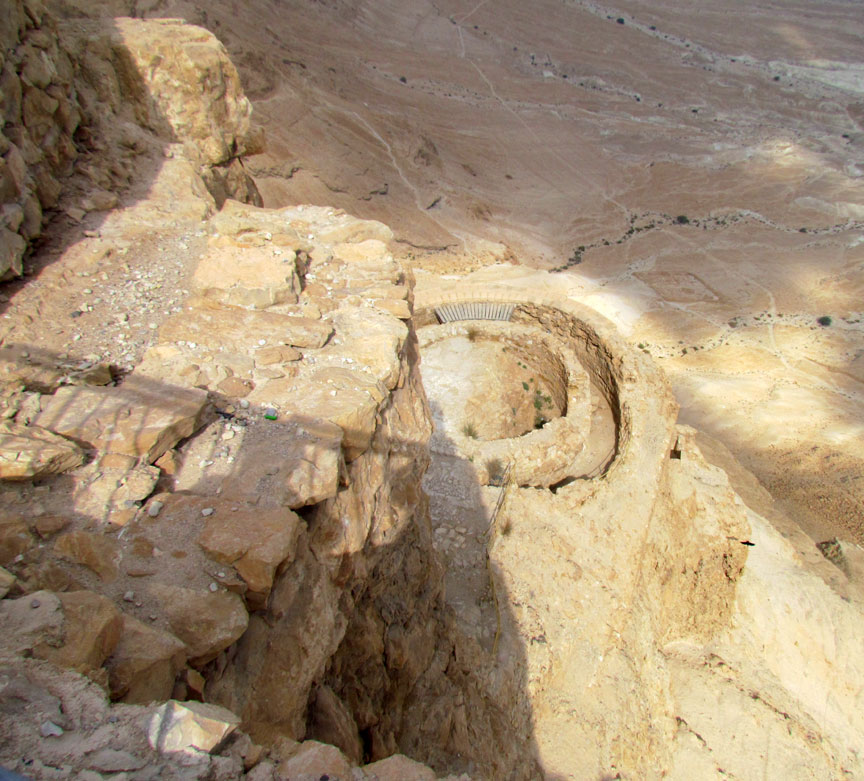
cistern
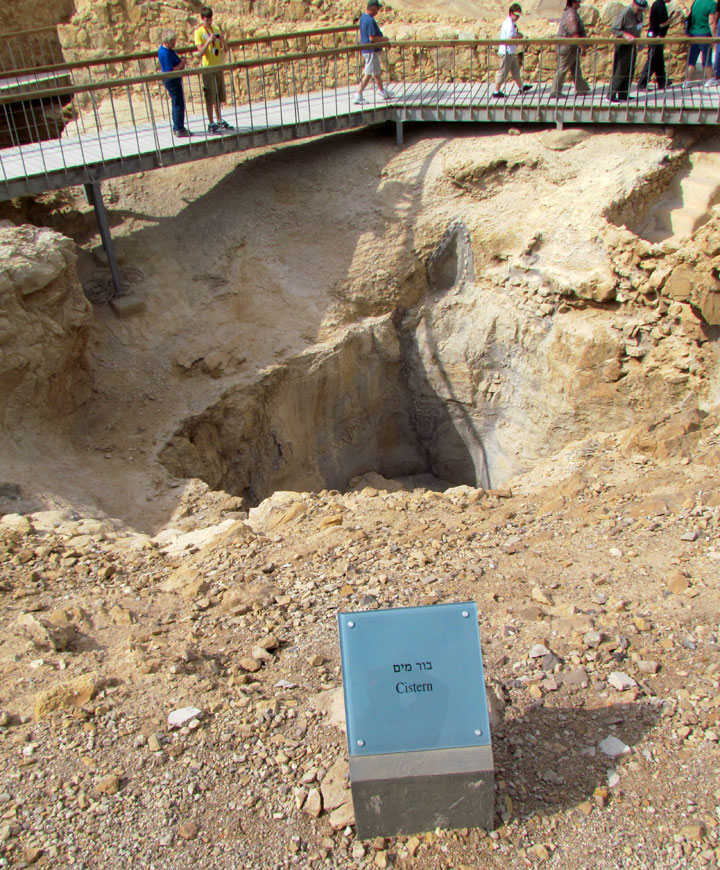

model showing how water reaches Masada
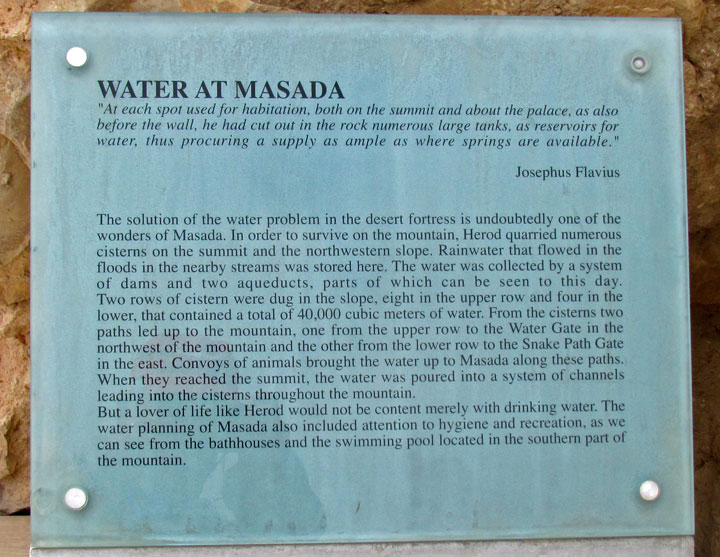
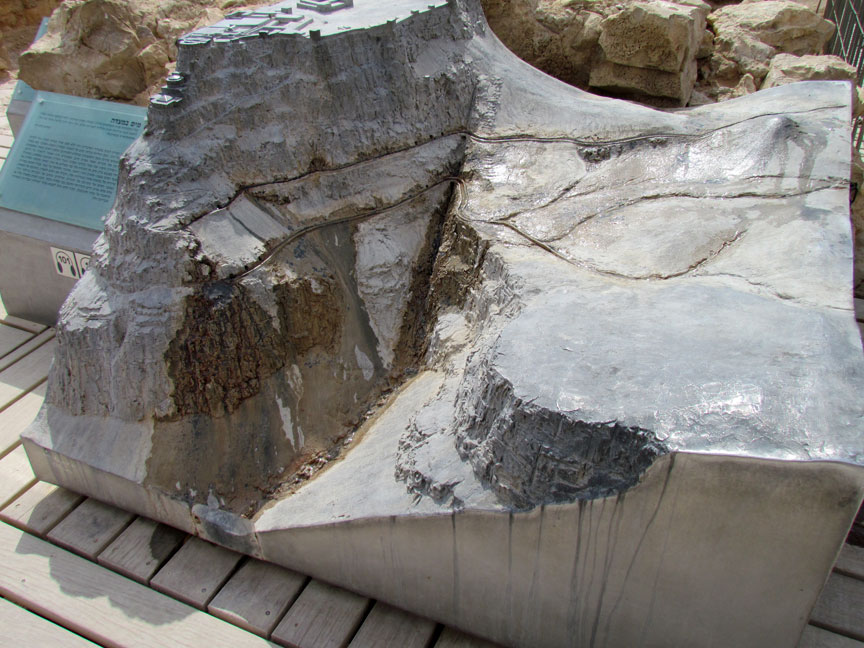
Herod also hewed 12 gigantic cisterns into the mountainside to collect flood
water; they had a capacity of some 40,000 cubic meters, enough to supply water
for all the needs of the inhabitants, from drinking water to a swimming pool,
bathhouses and agriculture. Thus in a rare combination of natural conditions and
human initiative, Masada became an impregnable fortress – almost.
Text from Wikipedia

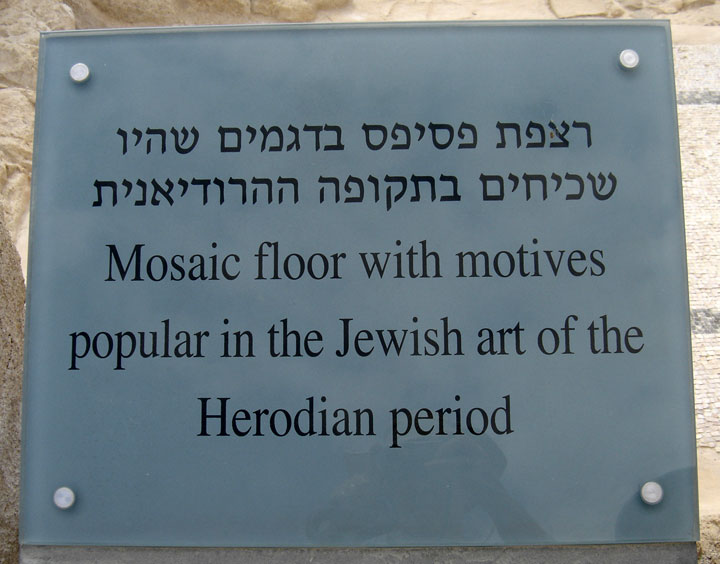
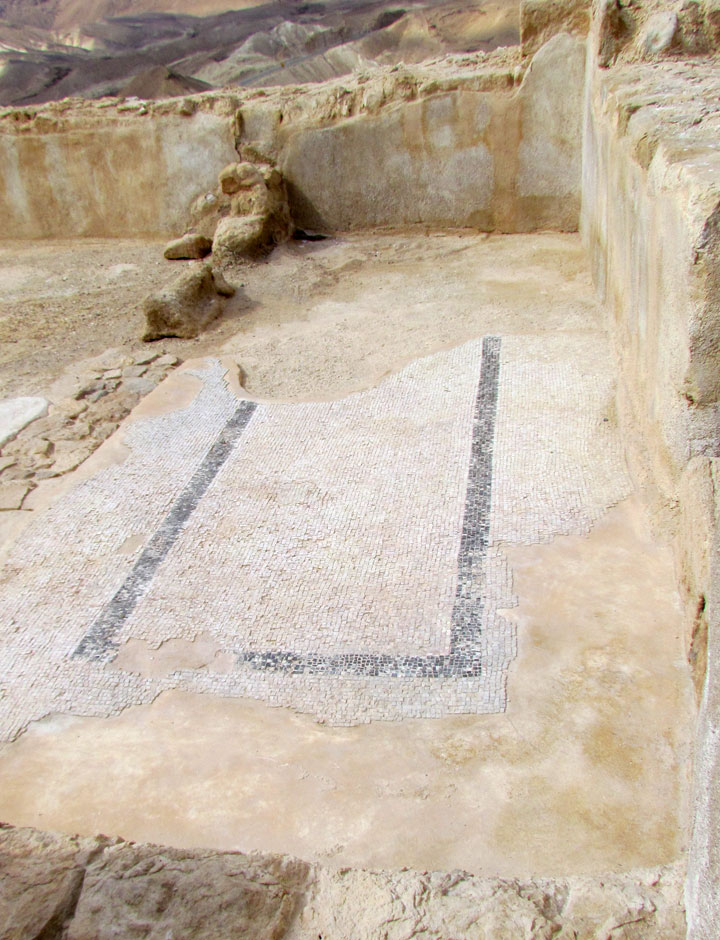
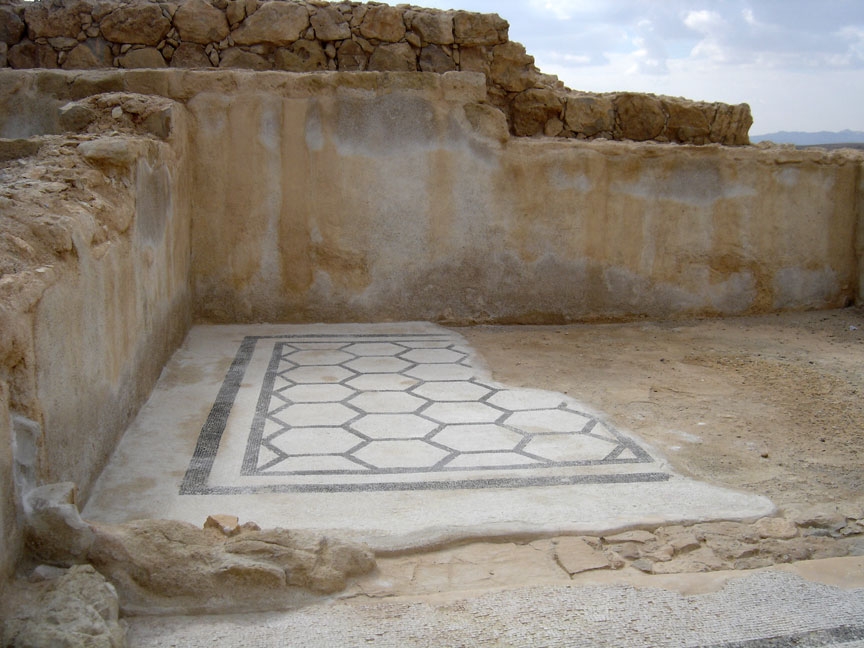
mosaic
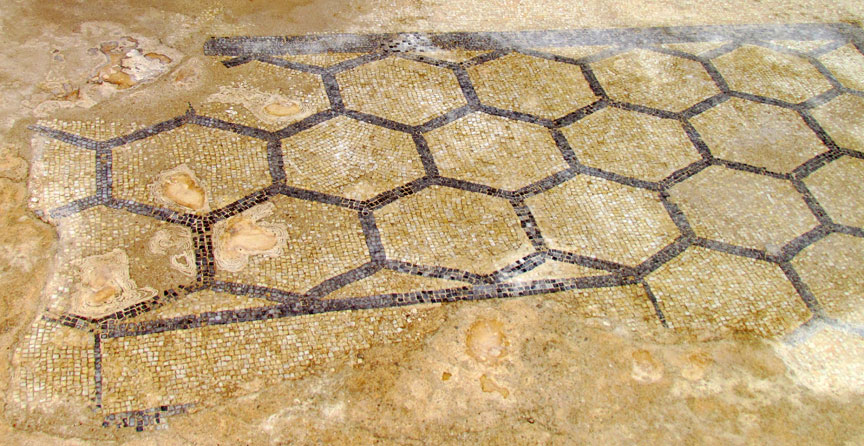

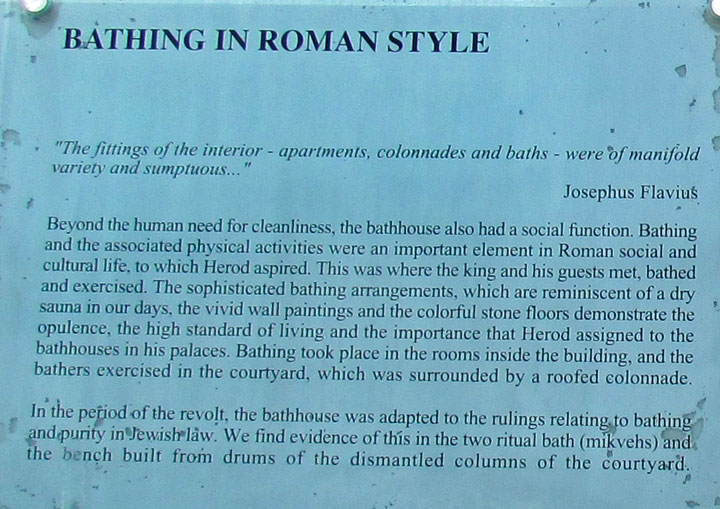

bath house
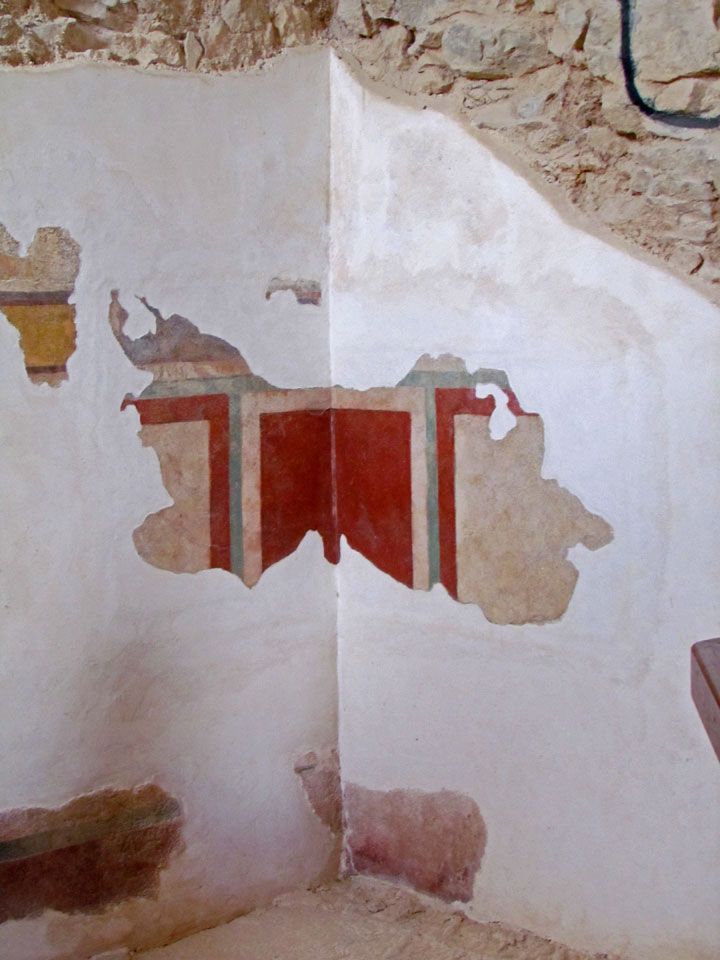
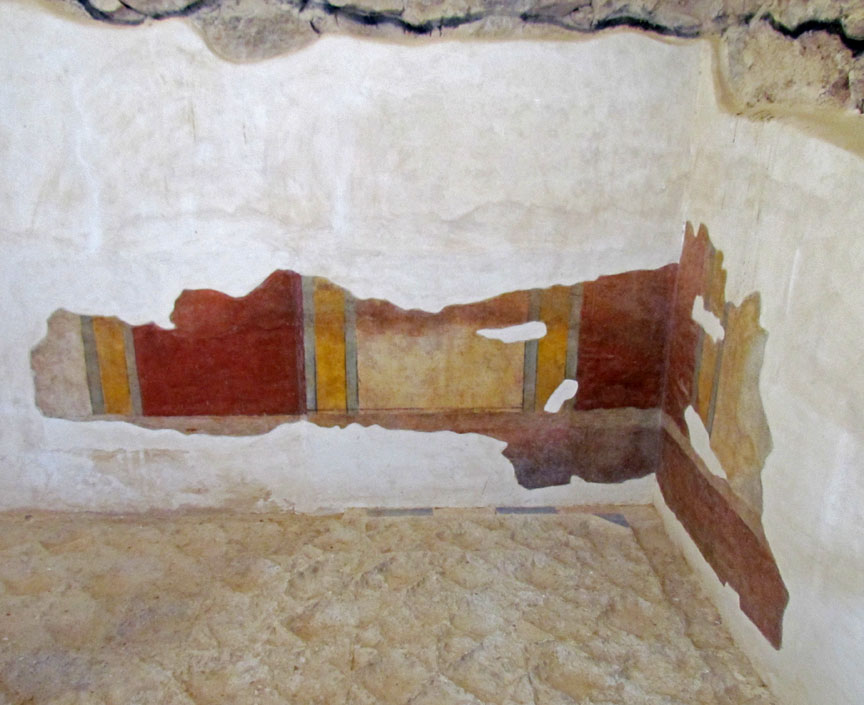
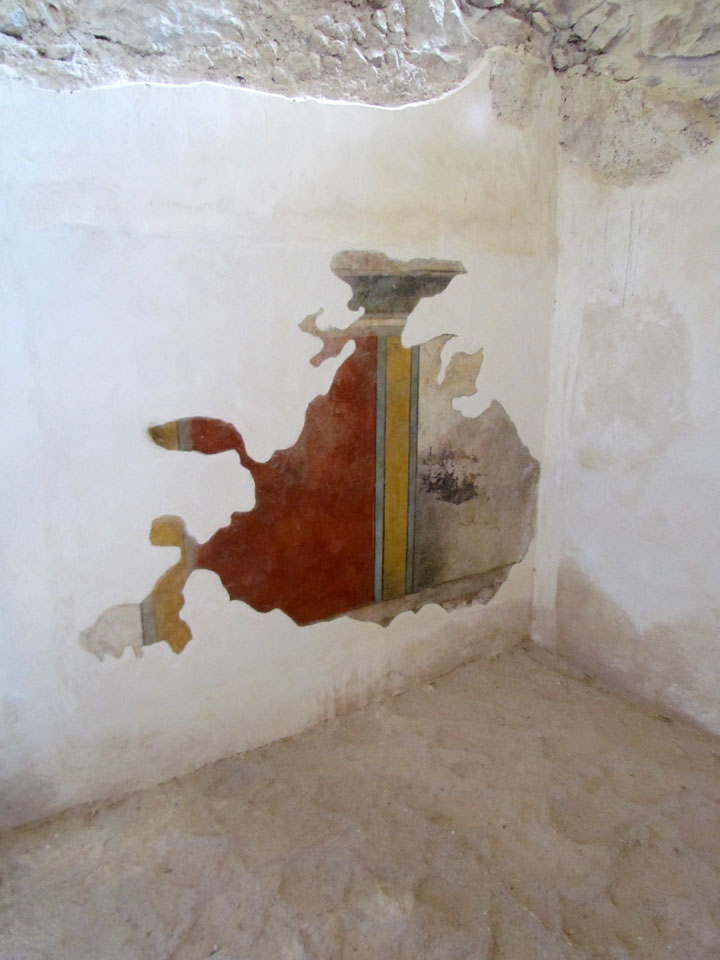

hot room
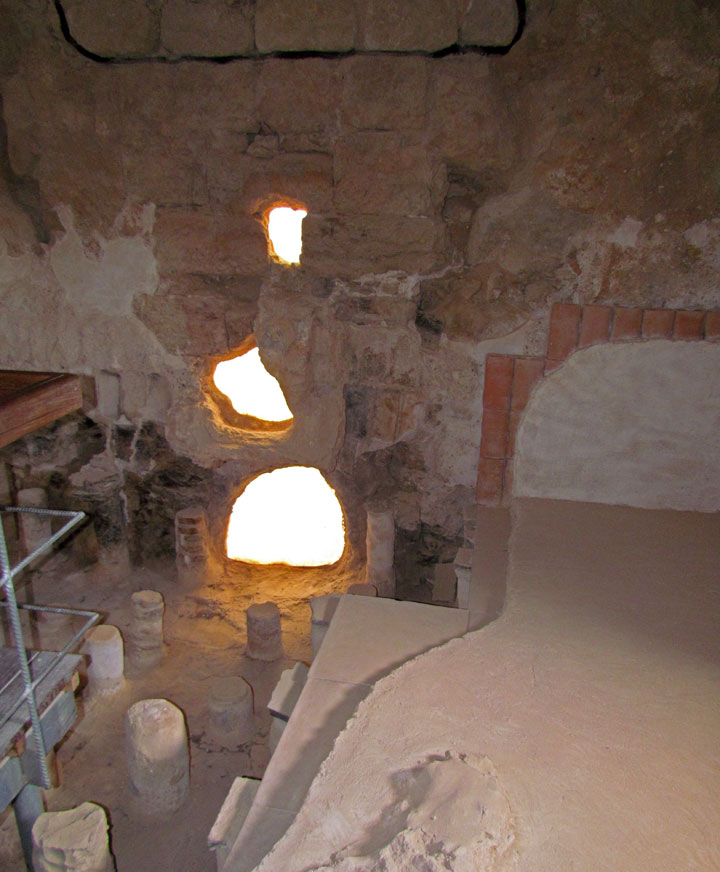
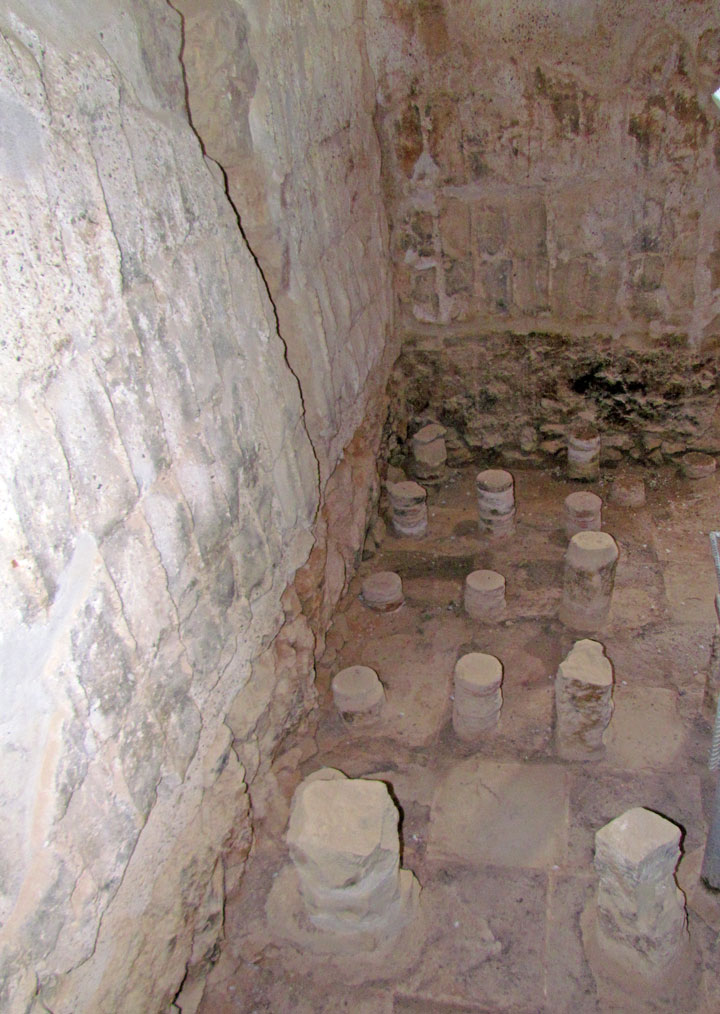
spacers to hold up the Hot Floor
where the hot gases are circulated below
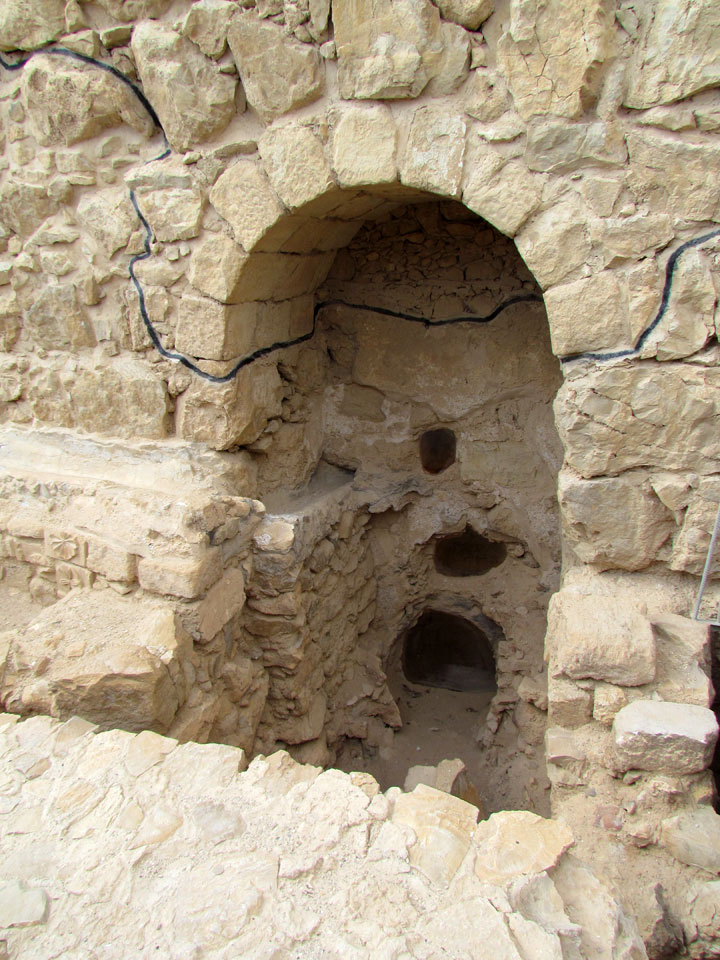
where the fires are located to create the hot gases

